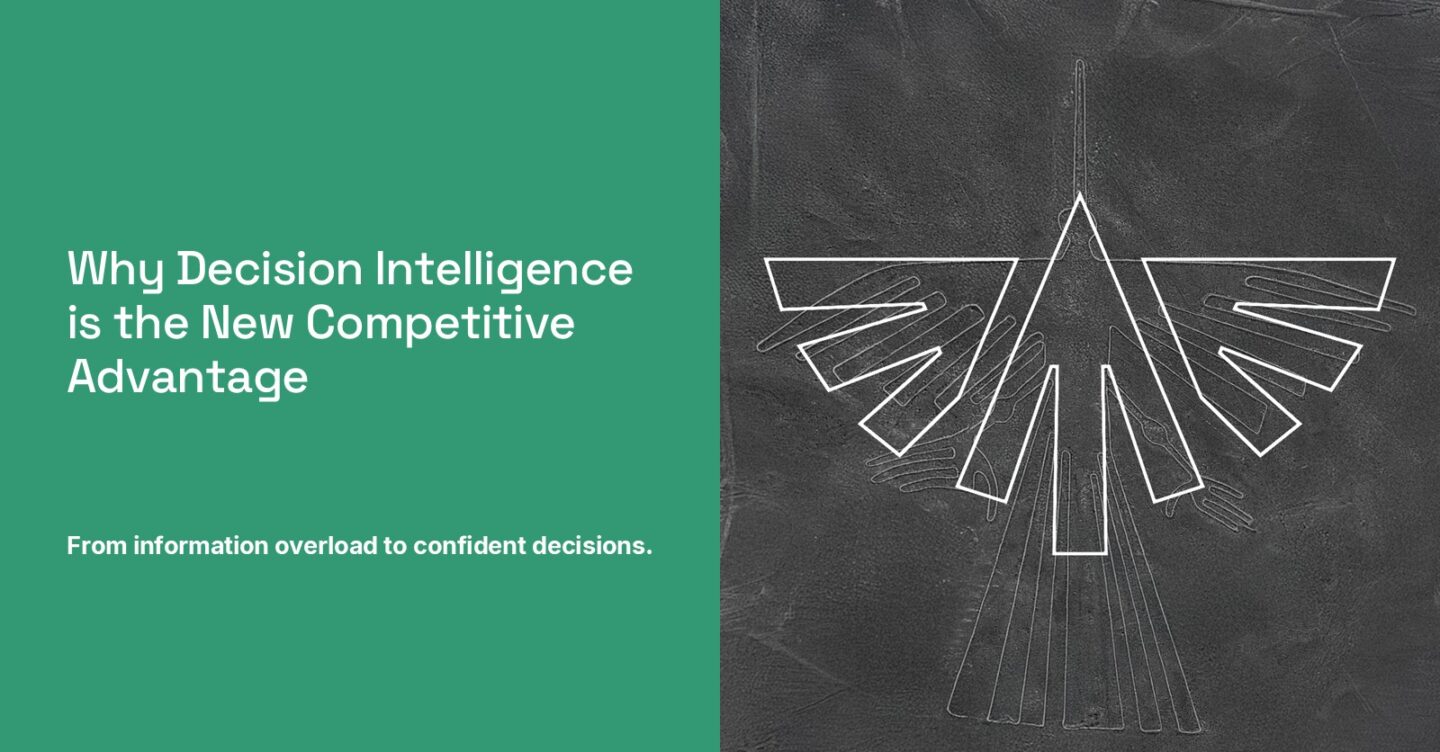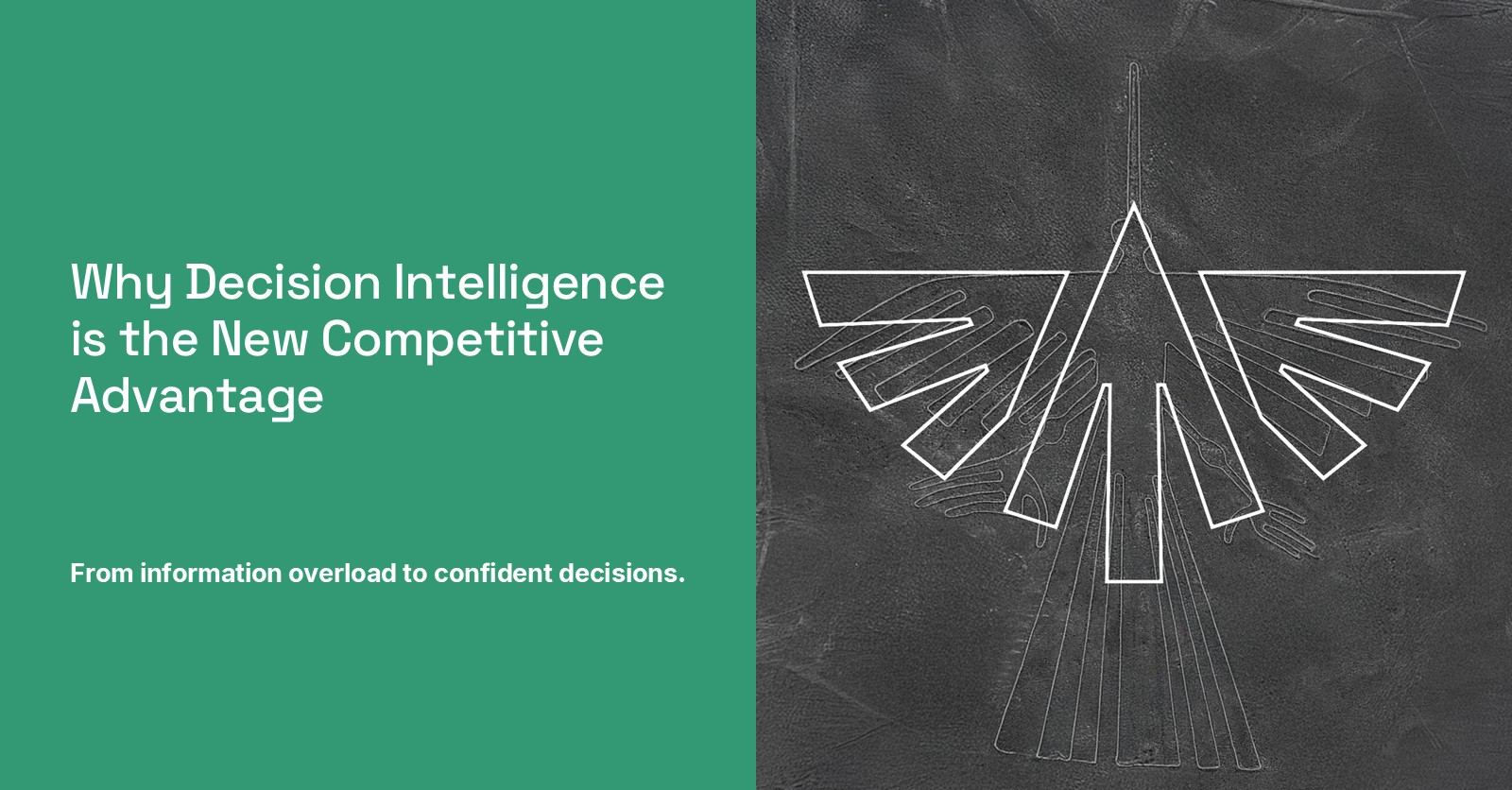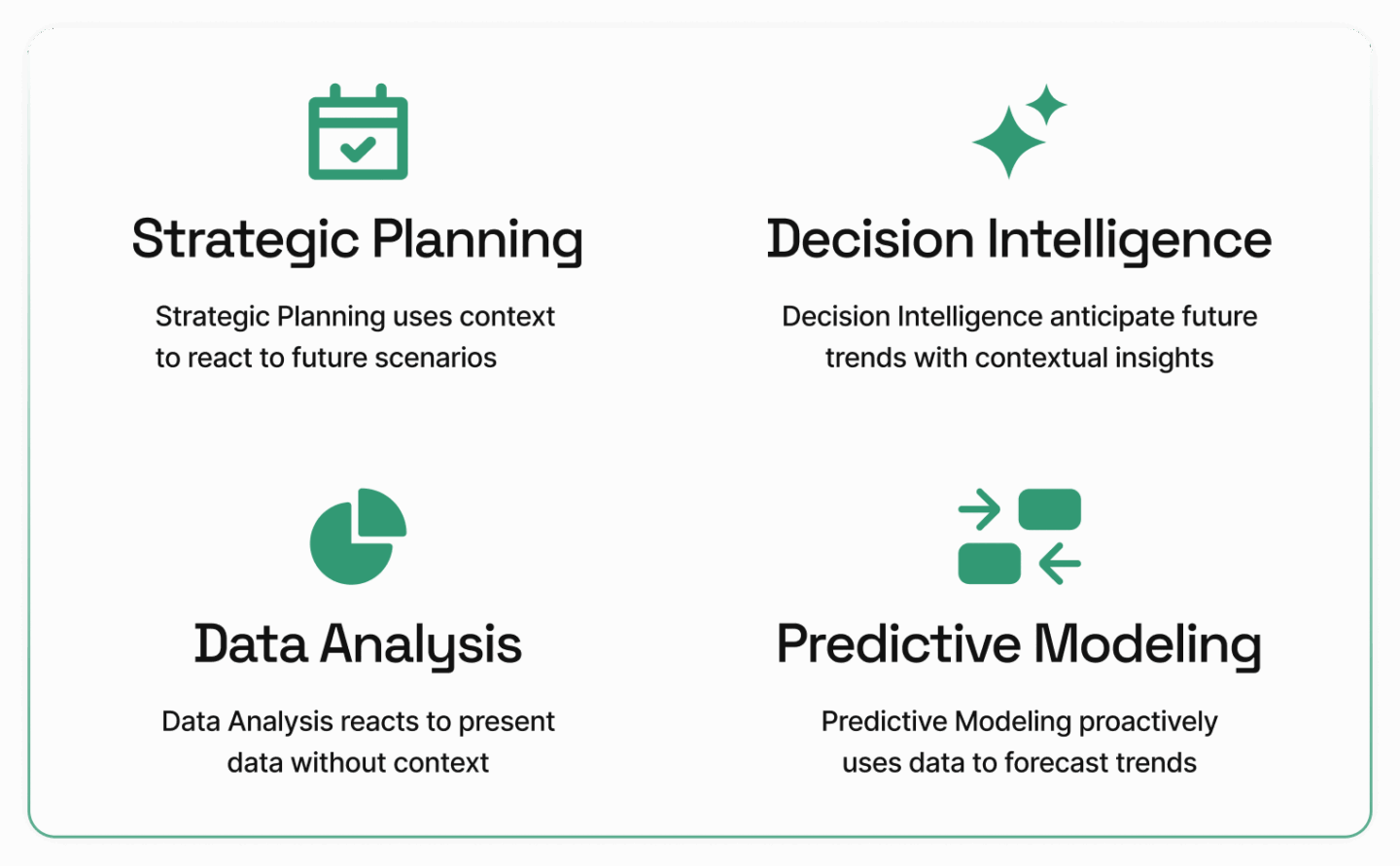Why Decision Intelligence is the New Competitive Advantage


In 2025, the company’s adoption of business intelligence tools peaks at just 30%, and it has been flat for a while. That also means that the other 70% or more are not data-driven, or worse, they do not know what to do with them.
Overthinking and indecision, sounds familiar?
The phenomenon of analysis paralysis is a significant threat to organisational agility. It causes delays, missed opportunities, and decreased productivity. For C-level executives, the imperative is choosing a culture that balances data analysis and decisive actions, but also leading the change management needed to shift behaviours and mindsets. Without that, even the best tools remain underused, and transformation stalls.
The next evolution – the invisible edge that will separate market leaders from the pack – is Decision Intelligence.
Beyond the Data Deluge
Let’s be clear: data is invaluable. The ability to collect, analyse, and derive insights from vast quantities of information has transformed industries. But there’s a growing gap between having data and knowing how to use it effectively. Many organisations have invested heavily in business intelligence tools and data analytics capabilities. They can tell you what happened last quarter, what’s trending now, and maybe even make some educated guesses about next month.
But in a world of constant disruption, is that enough?
Decision Intelligence takes us beyond the retrospective analysis and into a new paradigm of predictive and prescriptive intelligence. It’s not just about understanding what happened or why it happened. Decision Intelligence empowers leaders to model complex scenarios, understand intricate cause-and-effect relationships, and make high-stakes decisions with unprecedented clarity and confidence.
The Illusion of “Actionable Insights”
How many times have you sat through a presentation filled with colourful charts and graphs, only to be left wondering, “So what?” This is the trap of mistaking data visualization for genuine decision support. Actionable insights are only truly actionable if they lead to meaningful change. Decision Intelligence bridges the gap between insight and impact.
Imagine a retail CEO presented with data showing a 15% decline in foot traffic across their stores. Traditional analytics might suggest increasing marketing spend or launching a promotional campaign. But Decision Intelligence would potentially dig deeper, modelling the potential causes of the decline, from shifts in consumer behaviour to macroeconomic factors. It would then simulate the outcomes of various interventions, allowing the CEO to choose the strategy with the highest probability of success.
This is a fundamental shift in how organizations navigate complexity and uncertainty.
The Human-AI Partnership
A common misconception is that Decision Intelligence is about replacing human judgment with algorithms and agents. Humans are always going to be at the core of important decisions. But to support that, there are a set of things that can make the process vastly better. It’s about creating a symbiotic relationship between human expertise and artificial intelligence. Decision Intelligence amplifies our cognitive abilities, allowing us to process vast amounts of information, identify hidden patterns, and model outcomes in ways that would be impossible for even the most brilliant human mind alone.
This is the promise of Decision Intelligence: not to replace human ingenuity, but to elevate it to unprecedented heights.
From Reactive to Proactive
The ability to anticipate and shape the future is infinitely more valuable than the power to react quickly to the present. Decision Intelligence transforms organisations from reactive into proactive, capable of shaping their industries.
While data-driven thinking focuses on empirical evidence, it often lacks the contextual understanding necessary for nuanced decisions. Decision Intelligence addresses this gap by incorporating domain knowledge, human judgment, and predictive modelling. This synthesis allows organisations to move beyond reactive measures, fostering innovation and resilience.

- Rule-Based Decisions: These decisions rely on predefined rules and logic, offering consistency and speed in routine operations.
- Machine Learning Decisions: Leveraging algorithms that learn from data, these decisions adapt over time, enhancing accuracy and relevance.
- Workflow-Based Decisions: Integrating decision points within business processes ensures that actions are consistent and aligned with organisational objectives.
- Optimisation Models: Focused on maximising efficiency, these models identify the best possible outcomes within given constraints.
- AI Agentic Workflows: Empowering autonomous AI agents to operate independently, these workflows make decisions, adapt, and optimise processes to achieve specific goals without continuous human oversight.
The Imperative for Leaders
Leaders face a tough choice: either continue to rely on traditional decision-making processes, gradually falling behind as your competitors embrace more sophisticated approaches, or seize the opportunity to transform their organisation through Decision Intelligence by adopting the different methodologies listed above.
But..this isn’t just about adopting new technology. It’s about fostering a culture where every decision, from the boardroom to the operations, is informed by a deep understanding of complex systems and potential outcomes. It’s about moving beyond the limitations of human bias and the overwhelming nature of big data to a place where clarity emerges from complexity.
Organisations that master Decision Intelligence will be able to:
- Anticipate and shape market trends rather than merely reacting to them
- Make faster, more accurate decisions in high-stakes situations
- Optimise operations across complex, interconnected systems
- Innovate more effectively by identifying hidden opportunities and risks
- Build more resilient, adaptive business models that can thrive in uncertainty
Unlocking the future with Decision Intelligence
Implementing Decision Intelligence is a specific project for each company or each function and is adapted to each individual management style. But the rewards – in terms of competitive advantage, operational efficiency, and strategic foresight – are immeasurable.
A good starting point is to identify the critical decisions that drive your business. Where are the points of leverage where better decision-making could have an outsized impact? Then, the best way is to see the impact on a small-scale project or proof of concept, and then expand it to the function and to the entire organisation. With platforms like Natzka, it is possible to take better decisions while reducing the technical complexities.
The future belongs to those who can see beyond the obvious, who can find patterns in the noise, and who can turn insight into decisions and into action with unprecedented precision.
The question isn’t whether your organization will embrace Decision Intelligence. The question is whether you’ll be a pioneer, shaping the future of your industry, or if you’ll be left behind, wondering why your competitors seem to be flying higher and faster than ever before.
The choice is yours. The future is waiting.
Are you ready to make the intelligent decision?


